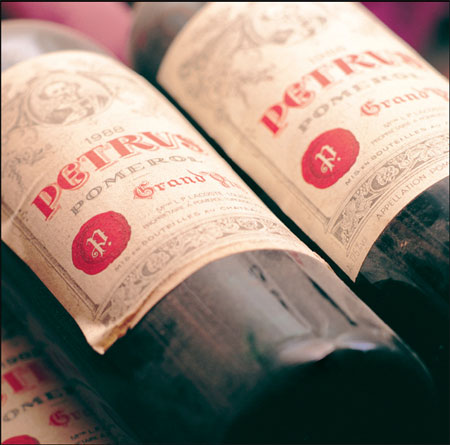Fine wine an investment that improves with age
Updated: 2010-09-18 07:16
By Ann Williams(HK Edition)
|
|||||||||

It was standing room only during an auction held at the Mandarin Oriental last weekend by Zachys Asia, the local arm of the New York-based wine specialist. "Hong Kong's wine scene is abuzz now more than ever," said Zachys' President Jeff Zacharia, already looking forward to its next local sale in November. The sale realized a total of HK$42,600,082 ($5,496,785), with 97.5 percent of the lots being sold, bought by 160 different buyers.
Spectacular increases in the price of fine wine have been attracting new investors, especially in Hong Kong and on the Chinese mainland. Starting from a base of 740 pounds sterling in 1992, the price of a case of 1982 vintage Chateau Lafite Rothschild, for example, rose at a steady rate until 2005, when it reached 4,650 pounds, and then took off to hit 35,000 pounds in April 2010.
Nick Pegna, managing director of the Hong Kong branch of UK wine merchant Berry Bros & Rudd, says that it was the 1982 Bordeaux vintage that first attracted investment, most notably when American wine critic Robert Parker, famous for his 100-point-scale wine ratings, began to extol its virtues. Liv-Ex Fine Wine Exchange, run by the London International Vintners Exchange, was founded in 1999 and runs an Internet-based information, trading and settlement platform for fine wine merchants. The first wine investment funds also appeared around 10 years ago.
Bordeaux remains the pinnacle of the wine-investment world. "We're looking at the first-growth wines of the top 30 chateaux in Bordeaux, but other wines that offer investment possibilities include the top Burgundies, especially Domaine de la Romanee Conti and Henri Jayer. Beyond that, Grange from Australia is worth looking at," says Pegna. "Of the Bordeaux wines, Chateau Lafite always outperforms the rest, with demand now driven by Chinese buyers."
Champagne can also reach stratospheric prices thanks to both restricted supply and the "bling" factor. Pegna believes that only three are worth considering: Dom Perignon, Krug and Cristal Roederer. The bubble may have burst with Cristal, however; it had become the tipple of choice among American rappers, but when the Cristal boss indicated that he wasn't entirely happy with the association, demand fell.
Wine aficionado Simon Reid-Kay has been collecting wine for 20 years. As he buys wine primarily for consumption, he goes for second-growth clarets, a British term for top Bordeaux. "I buy now for drinking in 10 years' time. The old rule that you buy two cases - one to drink and the other to sell to help pay for the storage costs or fund future purchases - makes sense," he says.
"Recently I have gone upmarket in my purchases - buying less but more expensive wine; this is partly because of the high cost of storage rental." Reid-Kay is also participating in a wine fund that sells first-growth wines from the top six or seven Bordeaux chateaux, purely as investment.
There are several channels through which to invest in wine, mainly merchants, brokers, auction houses and wine funds. Research which method is best for you, but for beginners the specialist expertise of merchants is most appropriate. You also need to think about an exit channel, too, so you can realize profits when the time comes.
"I was introduced to a small family-run wine merchant based in Oxford," says Reid-Kay. "The service is very personal, and of course they know all of the 'negociants' in Bordeaux and attend the tastings."
Every spring, the major chateaux produce samples from the previous year's harvest, which are then tasted by experts. A proportion of the production is released for sale at a certain price, and is bought by the negociants through strict allocation. The better the relationship you have with your merchant, the better chance you have of being able to secure the very limited amount on offer.
(HK Edition 09/18/2010 page2)